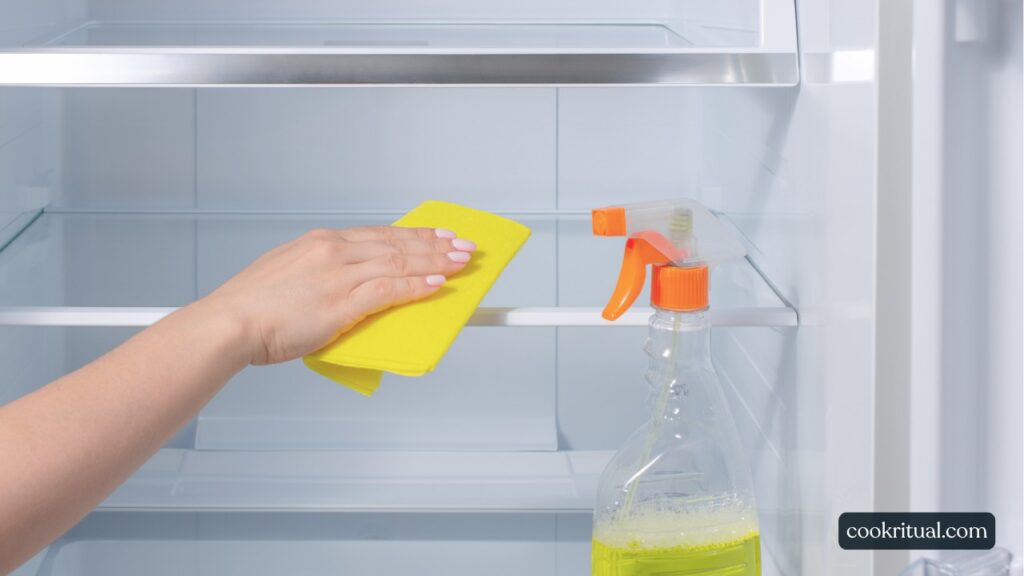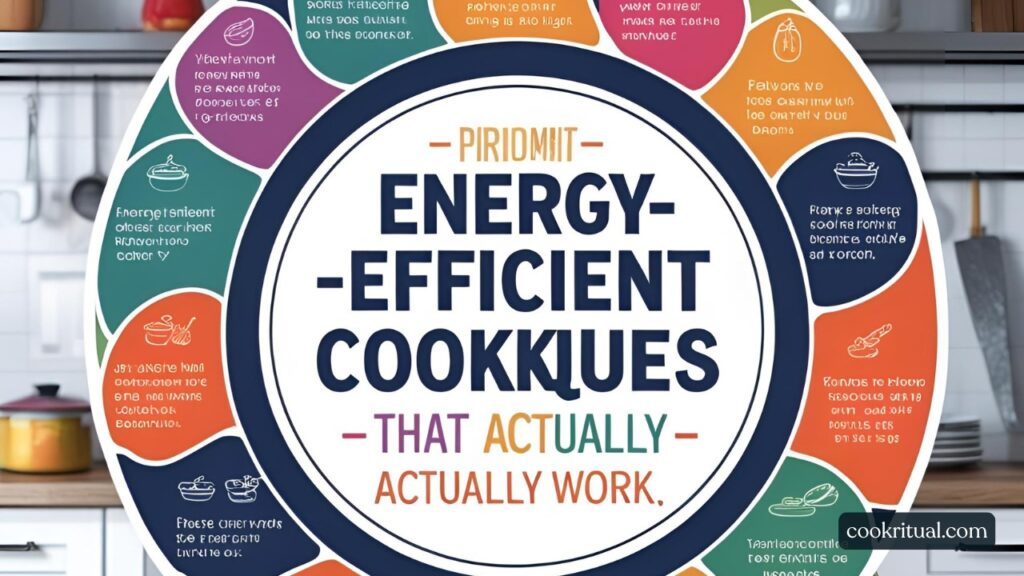Cutting your energy bill starts right in your kitchen. It’s one of the most energy-hungry spaces in our homes—between cooking, refrigerating, and cleaning, we burn through more electricity than we realize. But here’s the good news: with just a few smart changes in how we use our kitchen appliances, we can significantly lower our energy consumption without sacrificing convenience or flavor.
For health-conscious individuals and busy professionals alike, every minute and dollar counts. That’s why adopting a more energy-efficient kitchen routine not only supports a sustainable lifestyle but also helps streamline meal prep and save money over time. Whether we’re planning our weekly meals or reheating leftovers, understanding the best practices for using kitchen appliances efficiently is a game-changer.
In this guide, we’ll walk through practical, real-world energy-saving tips based on proven kitchen strategies, trusted sources like Energy Star and the U.S. Department of Energy, and years of firsthand cooking experience. Let’s build a kitchen that’s not only smarter but also lighter on our wallets and the environment.
Contents
- 1 Why Kitchen Appliances Are Key to Reducing Your Energy Bill
- 2 Top Energy-Saving Kitchen Habits for Everyday Use
- 3 Best Energy-Saving Kitchen Appliances to Consider
- 4 Smart Ways to Maintain Your Kitchen Appliances for Efficiency
- 5 Energy-Efficient Cooking Techniques That Actually Work
- 6 Comparison: Traditional vs. Smart Kitchen Appliances
- 7 Frequently Asked Questions (FAQs) About Energy-Saving Kitchen Appliances
- 8 Buying Guide: What to Look for in Energy-Efficient Kitchen Appliances
- 9 Conclusion
Why Kitchen Appliances Are Key to Reducing Your Energy Bill
Our kitchen appliances use more power than most other devices in the home. Think about the refrigerator running 24/7, or the oven heating up to high temps. According to the U.S. Department of Energy, cooking and kitchen tools are some of the top energy consumers in a household.
If we don’t manage these appliances smartly, we end up wasting energy every day. That not only raises our electricity bill but also adds to our carbon footprint. Using energy-efficient appliances and adjusting how we use them helps lower our costs and supports a greener lifestyle.
How Much Energy Are We Really Using?
Here’s a simple breakdown of what some major kitchen appliances can cost us in energy each year:
- Refrigerator: ~13% of home electricity use
- Oven and stovetop: ~8%
- Dishwasher: ~2%
- Microwave: ~1–2%
(Source: Energy Star)
It may not seem like much at first, but these numbers add up fast—especially when we cook daily or have a large family. Small changes in appliance use can make a big difference on the monthly utility bill.
Top Energy-Saving Kitchen Habits for Everyday Use
The way we use our kitchen tools matters just as much as which ones we buy. Building energy-efficient kitchen habits is the first and easiest step toward savings.
Turn Off Standby Power
Many appliances like microwaves, coffee makers, and toasters use standby power—even when not in use. This is often called “phantom energy.” Unplug devices or use a smart power strip to cut off power when you’re done using them. The Lawrence Berkeley National Laboratory reports that standby power can account for 5–10% of household energy use.
Use Lids and Match Pan Sizes
Cover pots and pans with lids while cooking. This traps heat and cooks food faster, saving energy. Also, make sure your pan matches the burner size. Using a 6-inch pan on an 8-inch burner wastes up to 40% of the heat.
Cook in Batches
Instead of cooking small meals multiple times a day, plan to cook in batches. This reduces how often the oven or stove is on and cuts down energy use from reheating meals. Leftovers can be stored and reused in creative, healthy ways.
Only Fill the Kettle for What You Need
Boiling more water than needed wastes time and energy. Try only filling your kettle with the amount you need. It’s a tiny habit that leads to noticeable savings over time.
Let Food Cool Before Refrigerating
Placing hot food directly into the fridge makes the unit work harder to cool it down. This increases power consumption. Let leftovers cool to room temperature first (but no more than 2 hours to avoid food safety risks—CDC guidelines).
Best Energy-Saving Kitchen Appliances to Consider
Choosing the right appliances can cut energy costs for years. When shopping or upgrading, look for units labeled Energy Star Certified. These products meet energy-saving standards set by the U.S. Environmental Protection Agency.
Induction Cooktops vs. Gas Stoves
Induction cooktops are more efficient than gas stoves. They heat pans directly using electromagnetism and waste less heat. According to Energy.gov, they use 10–20% less energy than traditional electric coils and up to 30% less than gas.
Microwaves for Reheating
When reheating food or cooking small portions, use a microwave. It uses far less energy than a conventional oven. This makes it one of the best energy-saving appliances in modern kitchens.
Upgrade to Energy Star Refrigerators and Dishwashers
New refrigerators with Energy Star ratings use 15% less energy than older models. Dishwashers with soil sensors can also adjust water and energy use based on how dirty the dishes are.
Smart Kitchen Gadgets
Smart ovens, plugs, and even toasters now help track and optimize power usage. These tools often come with phone apps to schedule cook times and auto-shutoff. That’s not only energy-efficient—it’s convenient for busy professionals.
Smart Ways to Maintain Your Kitchen Appliances for Efficiency
Maintaining appliances the right way helps them run better and use less energy. Over time, dirt, wear, and small problems can make them less efficient. But with a few simple steps, we can keep everything in top shape and save electricity in the kitchen.
Clean Regularly for Peak Performance

Dust and food buildup can block vents and strain motors. Clean behind your fridge at least twice a year, especially the coils. Dirty coils can raise energy use by up to 30%, according to the U.S. Department of Energy.
For dishwashers and ovens, wipe down seals and check for grime. Clean filters monthly to help airflow and reduce kitchen energy bills.
Check Seals and Gaskets
Loose seals let cold or hot air escape. This makes fridges and ovens work harder. Close the fridge door on a dollar bill—if it slides out easily, the seal needs replacing. This small fix can make a big difference.
Defrost Freezers Often
Ice buildup forces the freezer to work harder. If the frost layer gets thicker than a quarter inch, it’s time to defrost. This keeps your unit running efficiently and saves power.
Replace Outdated Appliances
If your fridge, oven, or dishwasher is more than 10 years old, consider upgrading. Newer low-energy kitchen devices are made to use much less power and water. The Energy Star guide helps compare models before buying.
Energy-Efficient Cooking Techniques That Actually Work

How we cook affects our energy use as much as the tools we use. By choosing smart cooking methods, we save both time and power.
Use a Pressure Cooker or Slow Cooker Turn off ovens and stoves a few minutes early to use residual heat

Pressure cookers cook food much faster, cutting energy use by up to 70%. Slow cookers also run at low wattage and are great for soups, stews, and batch meals. Both are perfect for energy-saving cooking methods.
Learn more about these benefits from Energy.gov.
Choose the Right Pan for the Burner
Using a small pan on a large burner wastes heat. Match the pan size to the burner. It’s a small step that adds up, especially if we cook often.
Turn Off Heat Early
Most stoves and ovens stay hot for a few minutes after turning them off. Try switching off the heat 5 minutes early and let residual heat finish the job. This works well for pasta, baked goods, and casseroles.
Don’t Preheat Unless You Need To
Not every meal needs a preheated oven. Skip it for casseroles, frozen foods, or roasting veggies. According to Harvard Health, adjusting cook times slightly can keep meals healthy while cutting waste.
Comparison: Traditional vs. Smart Kitchen Appliances
Today’s smart kitchen appliances do more than just cook. They learn your habits, adjust settings, and turn off automatically. But are they always better than traditional models? Let’s compare.
Benefits of Smart Technology
- Remote control: Manage settings from your phone.
- Sensors: Adjust cooking time and power to avoid overuse.
- Energy reports: Show how much power each task uses.
These tools make it easier to optimize kitchen energy efficiency. Smart dishwashers, for example, can detect how dirty dishes are and use less water and heat.
Drawbacks to Consider
- Upfront cost: Smart gadgets usually cost more.
- Wi-Fi issues: Features depend on a good internet connection.
- Learning curve: Some tools have complex apps or setup steps.
Still, over time, many smart appliances pay for themselves in energy savings. The EPA’s Energy Star site tracks the savings and options available.
Frequently Asked Questions (FAQs) About Energy-Saving Kitchen Appliances
How much can I really save by using energy-efficient appliances?
Using Energy Star certified appliances can cut your kitchen energy use by 10–50%, depending on the device. For example, newer refrigerators use about 15% less energy than older models. The U.S. Department of Energy explains that these savings add up over time and reduce utility bills significantly.
Is it worth upgrading old kitchen appliances?
Yes. Older appliances can use up to twice the energy of modern ones. Upgrading may seem costly upfront, but the savings on energy bills and improved performance usually pay off within a few years. Plus, newer appliances are often more eco-friendly and have better features.
Are smart kitchen appliances truly energy efficient?
Smart appliances use sensors and timers to optimize energy use. They can shut off automatically and adjust cooking times to save power. While they may have a higher purchase price, the long-term savings and convenience make them a smart choice for many households. Check out the Energy Star smart appliance guide for more info.
Can simple habits really reduce kitchen energy use?
Absolutely. Small changes like turning off appliances when not in use, cooking in batches, and using lids can lower energy use by up to 20%. Combined with energy-efficient appliances, these habits make a big impact on your electric bill.
Buying Guide: What to Look for in Energy-Efficient Kitchen Appliances
Check for Energy Star Certification
Always look for the Energy Star label when buying refrigerators, dishwashers, ovens, or microwaves. This label means the appliance meets strict energy-saving guidelines set by the U.S. Environmental Protection Agency. Visit Energy Star to compare models.
Consider Appliance Size and Capacity
Buy the size that fits your household needs. Larger appliances use more energy, so avoid oversized refrigerators or ovens if you don’t need the extra space.
Look for Advanced Features
Some models include eco-modes, delayed start, or smart sensors to reduce energy use. These features adjust cycles based on load size or food type, which saves electricity and water.
Compare Energy Use Before Buying
Most appliances come with an energy guide label that shows estimated yearly energy use and cost. Comparing these can help you pick the most efficient model within your budget.
Conclusion
Saving energy in the kitchen is easier than many think. By choosing the right appliances and using smart habits, we can lower our energy bills and help the environment. From using Energy Star certified devices to cooking in batches and unplugging appliances, every small step counts.
Maintaining appliances and adopting energy-efficient cooking methods keeps our kitchen running smoothly while saving power. Whether upgrading to smart appliances or simply turning off standby power, these changes make a real difference.


